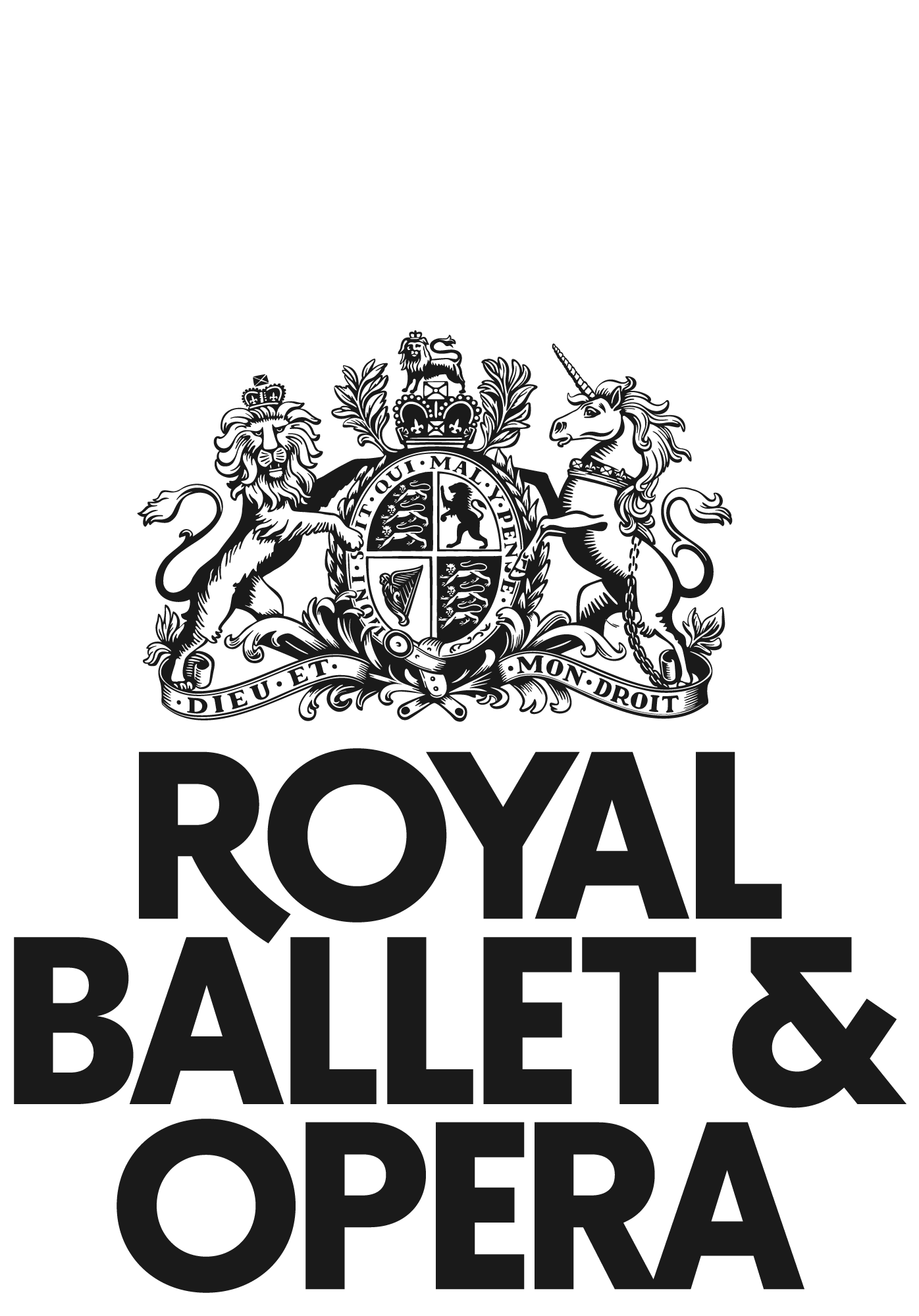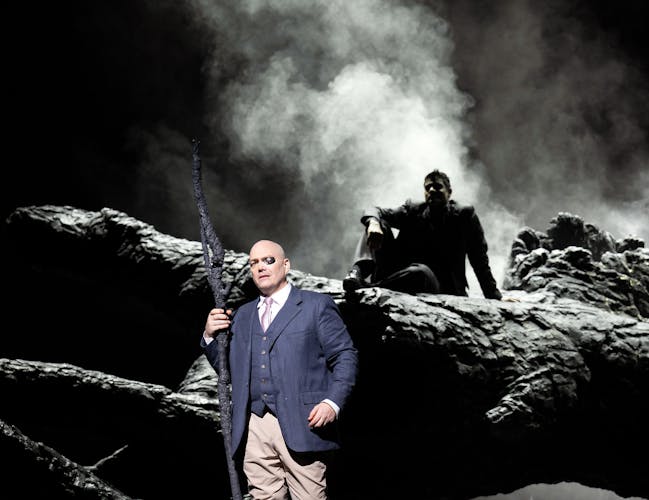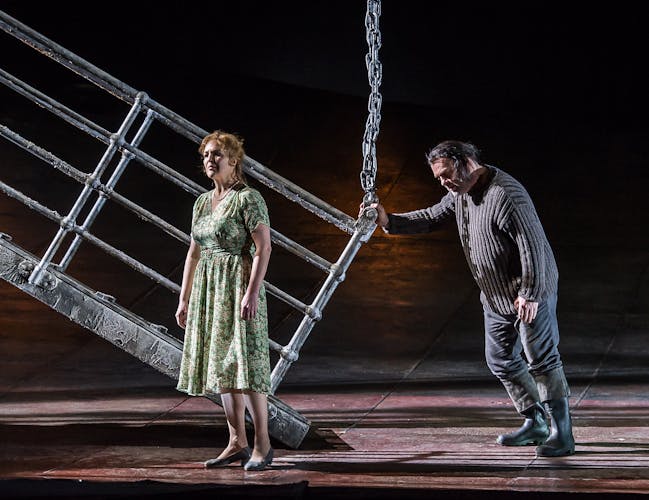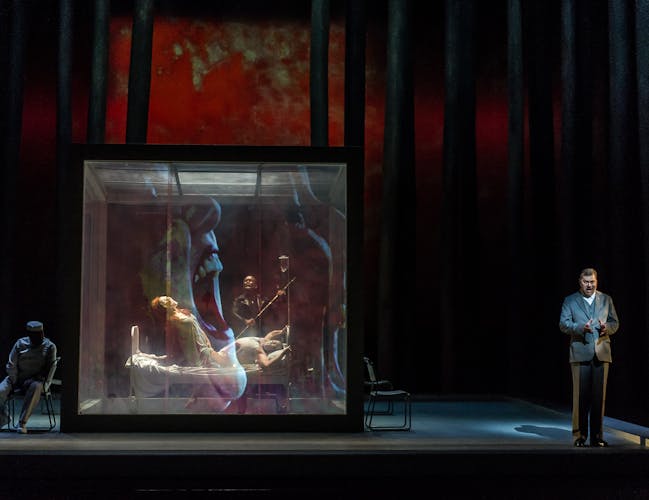Creative Spotlight: Richard Wagner
Richard Wagner was a German composer. He was born in Leipzig, Germany, in 1813, and had an enormous impact on opera and classical music.
Wagner's large-scale works are known for their rich orchestration and overwhelming effects. The Ring cycle is his most well-known work, with its four interconnected operas (Das Rheingold, Die Walküre, Siegfried and Götterdämmerung) totalling 15 hours of music. He died in 1883 in Venice. Read on to find out more about Richard Wagner’s life and works.
Quick Facts
Where was Richard Wagner from?
Richard Wagner was born in Leipzig, a city in the German state of Saxony which was then part of the Confederation of the Rhein.
How Many Operas did Wagner Compose?
Richard Wagner composed 13 operas in total.
What is Richard Wagner’s Most Famous Work?
‘The Ride of the Valkyries’, which comes from Act III of Wagner’s opera Die Walküre, is one of the composer’s most famous and recognisable pieces of music. The Ring cycle is his most well-known opera composition, with its four interconnected dramas (Das Rheingold, Die Walküre, Siegfried and Götterdämmerung) totalling 15 hours of music. His other famous works include the Overtures to Die Meistersinger and Tannhäuser, and the Preludes to Tristan und Isolde, Lohengrin and Parsifal.
What is a Gesamtkunstwerk?
The term ‘Gesamtkunstwerk’ means ‘Total work of art’. It was a term and concept that Wagner invented and discussed in essays published between 1849 and 1852. According to Wagner, a Gesamtkunstwerk is a work of music drama in which the text, music and visual elements are be synthesised, and all are subservient to the drama. This was a revolutionary concept, which broke with the tradition of arias and recitatives, and the idea received its fullest incarnation in Wagner’s Ring Cycle operas.
What is a Leitmotif?
A Leitmotif or Leitmotiv is a short musical theme which can be melodic or rhythmic, and which is repeated throughout the course of an opera. It is often associated with different themes, characters or objects. Wagner didn’t invent the term; it was applied to his works by the critic, Hans von Wolzogen, who published a guide to the motifs featured in the Ring in 1876.
List of Operas
- Die Feen (written in 1834 premiered in 1888)
- Das Liebesverbot (1836)
- Rienzi, der Letzte der Tribunen (1842)
- Der Fliegende Holländer (1843)
- Tannhäuser (1845)
- Lohengrin (1850)
- Das Rheingold (1869)
- Die Walküre (1870)
- Siegfried (1876)
- Götterdämmerung (1876)
- Tristan und Isolde (1865)
- Die Meistersinger von Nürnberg (1868)
- Parsifal (1882)
Gallery
Biography
Early Life
Wagner was born in Leipzig, the youngest of nine children. His father, Carl Friedrich Wagner, died of typhoid when Wagner was just six months old, after which his mother, Johanna Rosine, moved in with the actor and playwright, Ludwig Geyer. Geyer became Wagner’s stepfather, although the composer suspected he was in fact, his biological father. Geyer was an influential figure, encouraging the young Richard Wagner’s interest in theatre and the arts, while several of his older sisters became actresses or opera singers.
He received his early music education in Dresden, at Pastor Watzl’s school, where he was a reluctant piano student. After Geye’s death, Wagner enrolled at the Dresdner Kruzcor, a boarding school with a choir, where he began composing, as well as writing his own plays. Although Wagner’s musical talents were evident early on, he toyed with becoming a playwright before embarking on a musical career, and was influenced by the writings of Goethe and Shakespeare.
Career
Early career
Wagner absconded from his first job as Music Director of the opera house in Magdeburg when he fell in love with the actress Minna Planer, whom he married in 1836. That same year, he composed his first opera, Das Liebesverbot (The Ban on Love). The couple were continually dogged by debt and twice had to smuggle themselves past border guards to evade warrants for Wagner’s arrest. In 1839 they escaped to Paris, where Wagner spent two years avoiding his creditors and failing to get his music performed. During this time, he developed a profound contempt for the French, but his years in the home of grand opera ultimately had an immense influence on his music. His second opera, Rienzi, der Letzte der Tribunen (Riezi, the last of the Tribunes), had its triumphant premiere in Dresden in 1842.
Early opera successes
More successes followed. The operas of Wagner’s ‘middle period’ show his compositional development, and the emergence of his original musical voice. Der Fliegende Holländer (The Flying Dutchman, 1843) – arguably the composer’s first masterpiece – was first performed in Dresden’s Königliches Hoftheater. Based on the legend of the doomed Flying Dutchman of folklore, Wagner said he had been inspired by a stormy sea crossing from Riga to London four years earlier. Tannhäuser (1845) followed soon after, (again premiered in Dresden), and its Medieval setting shows the composer’s increasing interest in mythological subjects from German folklore.
The Ring Cycle
The Ring Cycle is widely acknowledged as one of the most monumental achievements in Western art. Its four chapters were premiered in 1869 (Das Rheingold), 1870 (Die Walküre) and 1876 (Siegfried and Götterdämmerung); the same year in which all four operas were presented together as a continuous cycle. The composition was a lengthy process, spanning around 26 years, from 1848-1874. He described the cycle’s three last operas as a Bühnenfestspiel (a stage festival play), preceded by a Vorabend (preliminary evening) in the form of Das Rheingold. To find out more about the Ring Cycle, click here.
Mature operas
Wagner’s other operas continued the composer’s run of successes and scandals. Composed in the 12-year hiatus between Ring operas Die Walküre and Siegfried, Tristan und Isolde (premiered in 1865) depicted a tale of forbidden love, and its innovative, chromatic harmonies are seen as anticipating musical developments that would follow in the 20th century. Wagner was inspired by his love for Mathilde Wesendonck, a married woman who also inspired Wagner’s Wesendonck Lieder, a collection of songs often performed in concert. His opera, Die Meistersinger von Nürnberg (The Mastersingers of Nuremburg) premiered in Munich in 1868, and is a rare example of a comic opera in Wagner’s mature works. It also contains a number of the musical forms he had previously criticised, including rhyming verse, choruses, a ballet, arias and a quintet. Similarly diverse was the composer’s final opera, Parsifal, a tale of chivalry whose initial idea stemmed from a concept the composer had first explore back to 1857. It was premiered at Bayreuth in 1882, and the composer described the opera as Ein Bühnenweihfestspiel (a sacred festival stage play).
Wagner's Musical Style
Wagner’s musical style is distinctive for its masterful orchestration, as well as its use of Leitmotifs (recurring musical fragments which evolve and come to be associated with different dramatic themes as the opera progresses). Wagner was capable of conjuring a wide range of dramatic effects, from the swirling storm at the start of Die Walküre, to the ethereal grail motif in Lohengrin with high, subdivided violins, and the languishing pleasures of illicit love in Tristan und Isolde, conveyed through a series of endlessly unresolved chord sequences. Wagner was unusual in that he wrote the libretti for his operas, ensuring he had total creative control. Wagner created the libretto for the Ring cycle before writing the music, and he also wrote the libretto for each opera in reverse chronological order, starting with Götterdämmerung and finishing with Das Rheingold.
Personal Life and Politics
During his lifetime, Wagner’s personal and political life were never far from controversy. His involvement in a failed political coup in 1848 meant he and Minna went on the run again in 1848, and Wagner missed the 1850 premiere of Lohengrin while exiled in Switzerland. The marriage began to suffer. Wagner had an affair with a 21-year-old married woman, although it was his affair with the poet and author Mathilde Wesendock (a liaison which inspired the composition, the Wesendonck Lieder) that ended their marriage for good. To complicate matters further, Wesendock was married to Wagner’s patron, Otto Wesendock. He later fell in love with Cosima Liszt, the daughter of the composer Franz Liszt. When their relationship began, Cosima was married to the conductor, Franz von Bülow. She bore Wagner two children before they finally married in 1870.
Wagner expressed his antisemitic beliefs in his own published writings and following the composer’s death, his music was adopted by the Nazi party for many of its rallies and propaganda materials. Hitler and his associates had a long association with Bayreuth and Cosima Wagner, who continued to run the festival for many years after Richard Wagner’s death. Wagner’s musical and cultural legacy remains a space for fertile debate and discussion today.
A royal patron: King Ludwig II
A financial lifeline to the impoverished composer came in the form of King Ludwig II of Bavaria, an eccentric monarch sometimes known as the Swan King or Fairy Tale King. Ludwig became intensely interested in Wagner’s opera, Lohengrin, with its mythological plot, which chimed with the monarch’s fantastical imagination, and was also captivated by Tannhäuser. He invited Wagner to his residence in Munich in 1864, and became the composer’s principal supporter and bankroller, providing him with a luxurious villa in Tribschen, Switzerland. The premieres of Das Rheingold (1869), Die Walküre (1870), Tristan und Isolde (1865) and Die Meistersinger von Nürnberg (1868) were all given in the Bavarian capital.
What is Bayreuth?
Over several years Wagner scraped together enough funding to realise his great dream, of founding an opera festival dedicated exclusively to his music. The inaugural Bayreuth Festival was held in 1876 and opened with the first complete Der Ring des Nibelungen, staged in a specially-designed opera house, with a unique orchestra pit designed to support the acoustic and instrumental needs of the compositions. Wagner’s final opera, Parsifal, was first performed at Bayreuth in 1882, a few months before his death in Venice in 1883. The festival still continues today.
Wagner in Popular Culture
The Ride of the Valkyries, from Act III of the opera, Die Walküre, is arguably Wagner’s most famous composition. It was famously used in the 1979 film, Apocalypse Now, directed by Frances Ford Coppola. In the scene in question, a squadron of American air cavalry play Wagner’s music on helicopter-mounted loudspeakers as they assault a Viet-Cong-controlled village in the Vietnam war. More light-heartedly, The Ride of the Valkyries also features in the Looney Tunes cartoon, ‘What’s Opera, Doc?’. The Bridal Chorus from Wagner’s opera, Lohengrin is also popular at weddings.
Royal Opera House Covent Garden Foundation, a charitable company limited by guarantee incorporated in England and Wales (Company number 480523) Charity Registered (Number 211775)




